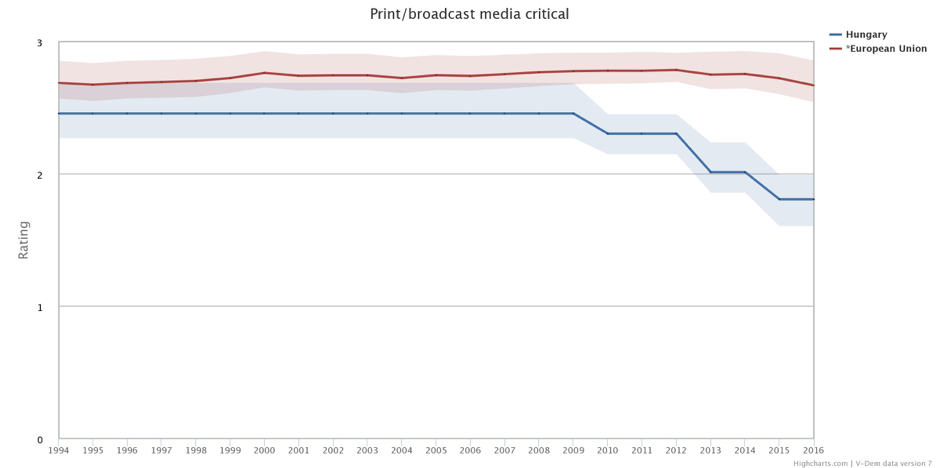Critical media reporting in Hungary
By: V-Dem Staff
May 04, 2018
On April 9, Hungary’s right-wing Prime Minister Viktor Orbán claimed his third consecutive victory in the general election with his party Fidesz, winning a two-third majority in parliament. Mr Orbán, a Eurosceptic campaigned on an anti-immigration platform. While it was a landslide victory for him and his party, election monitors have acknowledged that the vote came amid bias media reporting and xenophobia.
This week’s graph looks into the print/broadcast media critical indicator in Hungary compared to the European Union. This indicator examines the frequency with which the major print and broadcast outlets criticize the government. The graph shows the critical reporting on the government has declined since 2010, the year Prime Minister Orbán’s party’s parliamentary victory and his entrance into office as Prime Minister. Hungary has also seen its ranking in the World Press Freedom index plunge from 23 in 2010 to 71 in 2017. The general trend may be reflected in this year’s campaign, Prime Minister Orbán had refused to debate publicly with his opponents or speak to independent media sources, making genuine political debate challenging. He instead focused on speaking at rallies to his supporters focusing on his core policy - halting immigration. The pressure and intimidation faced by independent, non-pro government news outlets can affect the number of Hungarians exposed to robust discussion and debate which is essential to representative democracy.
Are you interested to learn more about freedom of expression around of the world? Use the Online Analysis Tool on V-Dem.net.


